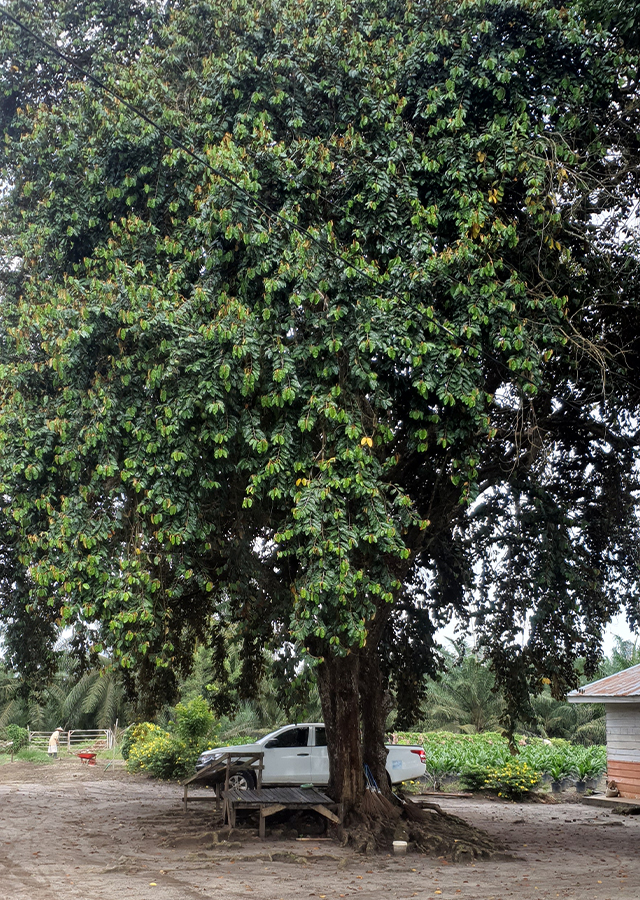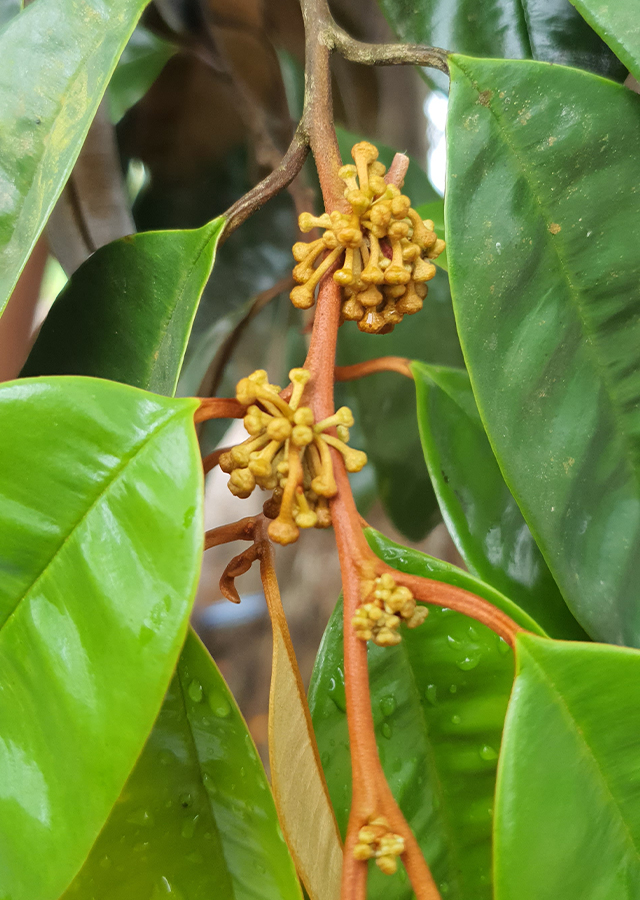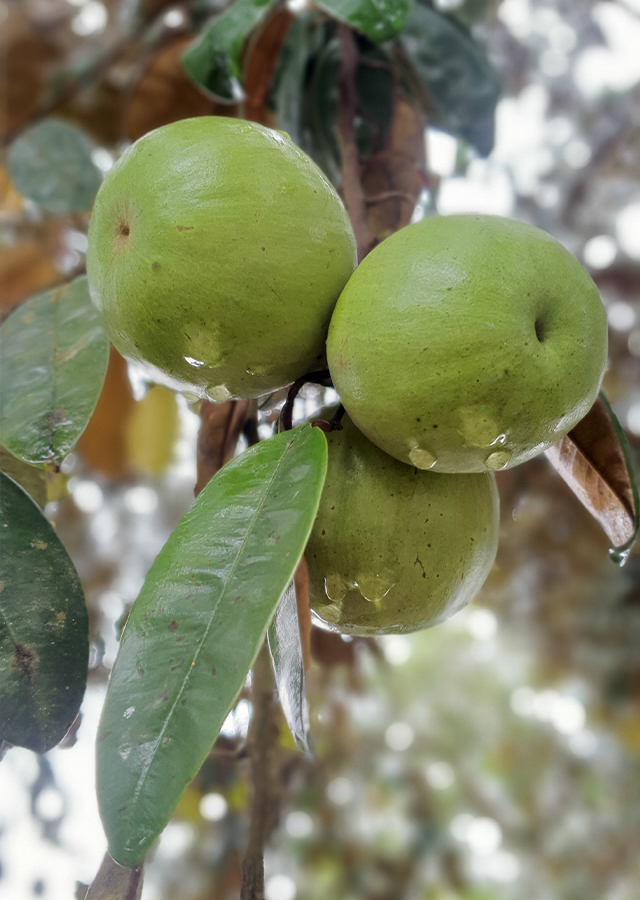Traditional Herbs from Chrysophyllum cainito
setup_kenitu_for_energy
- Prepare 700 g kenitu, 70 g granulated sugar, 1 finger of cinnamon, 7 cloves, enough boiled water, enough salt.
- Cut the kenitu. Boil the sugar, cinnamon, cloves and salt over medium heat. Once it boils and gives off a fragrant aroma, remove from heat and strain. Add the kenitu, then cook again over low heat until the kenitu looks wilted serve.
relieves_laryngitis_and_pneumonia
- Prepare kenitu fruit that has been washed thoroughly.
- Consume kenitu fruit.
What is Chrysophyllum cainito Looks like??



Parts of Chrysophyllum cainito that could be used
- Leaves
- Seeds
- Bark
- Fruit
- Latex
Chrysophyllum cainito Distribution
Kenitu comes from the lowlands of Central America and the West Indies. This plant spreads throughout the tropics. In Southeast Asia, kenitu is widely grown in the Philippines, Thailand and southern Indo-China. Kenitu trees are widely planted as ornamental and garden shade plants. The fruit is generally consumed as fresh fruit. Apart from that, kenitu can be used as an ingredient in traditional medicine. Cuban people in Miami use the leaves as a cancer medicine.Agroecology of Chrysophyllum cainito
Kenitu grows well in almost all types of soil and in a wide range of climates. In Southeast Asia, this plant grows well in the lowlands up to an altitude of 400 m above sea level.
Morphology of Chrysophyllum cainito
- Cylindrical stems, woody, rough surface brown, dark gray to white and emit a lot of latex (thick white sap) when injured.
- Single leaves, golden brown because of the fine hairs that grow especially on the lower side leaves and on twigs.
- Flowers are located in the leaf axils, in groups of 5-35 small flowers with long stems, yellowish to violet white, sweet fragrant.
- Fruit ovoid, 5-10 cm in diameter, smooth shiny skin, purplish red-dark purple or pale green, slightly thick skin, white flesh, soft, sweet, consisting of up to 10 seeds.
- Seeds are flat, hard shiny, light brown to purplish black.
Cultivation of Chrysophyllum cainito
Propagation is done by seeds, grafting, grafting and sticking.
Chrysophyllum cainito, more details :
Chemical Content of Chrysophyllum cainitoFlavonoids, tannins, alkaloids, triterpenes, sterols, polyphenols, β-sitosterol, lupeol, gallic acid, steroids, cardiac glycoside, ursolic acid.
Benefits of Chrysophyllum cainito
Treats rheumatism, chest pain, diabetes, coughs, strong medicine, relieves laryngitis and pneumonia, prevents allergies, lowers cholesterol levels, has antioxidant, anticancer and antimicrobial activity.
Simplisia of Chrysophyllum cainito
- Collect fresh, non-rotten leaves.
- Wash thoroughly with running water.
- Dry in the sun for several days until completely dry. Grind until they become a homogeneous powder.
- Store in a clean container and airtight.
Another Facts for Chrysophyllum cainito :
Synonym of Chrysophyllum cainitoCainito pomiferum Tussac, Chrysophyllum bonplandii Klotzsch ex Miq., Chrysophyllum caeruleum Jacq.
Habitus of Chrysophyllum cainito
Tree. Annual tree reaching 30 m in height
Habitat of Chrysophyllum cainito
- Forest
No comments:
Post a Comment